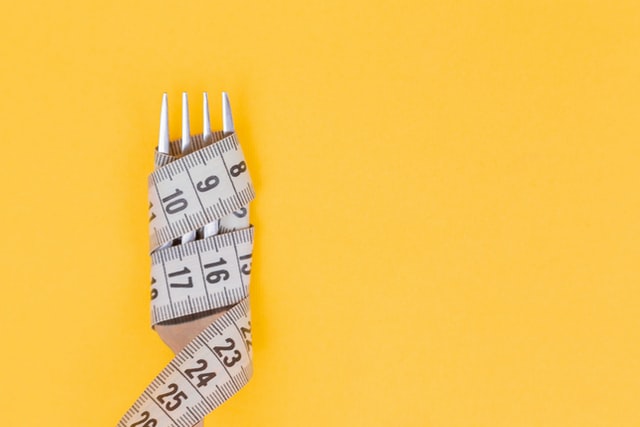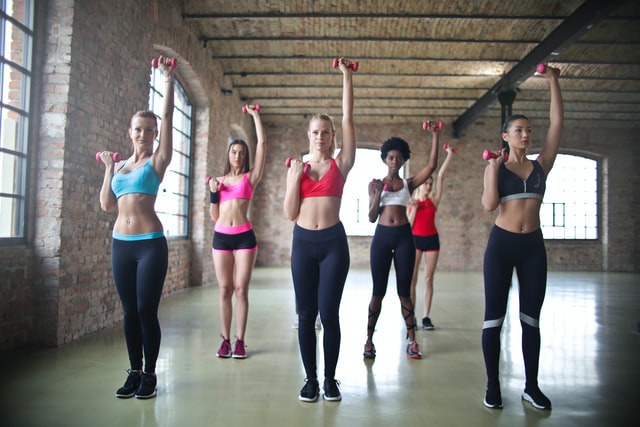In order to prepare your body for various types of exercises to improve and strengthen the body as a whole, you need to approach this rationally so as not to harm. Pre workout is important here.
Eating Before Training
Nutrition and training go hand in hand. Food gives us the energy we need to exercise and the nutrients we need to recover from training and competition. This is an important part of the pre-workout.

Carbohydrates are the fuel that allows us to work at full strength. There is a common misconception that you can come to sporting activities on an empty stomach and give it your all effectively thanks to the reserves of glycogen in the muscles and liver (our reserve fund of carbohydrates for exercise and in case of hunger).
However, there are two traps here: first, glycogen reserves are limited, and an ordinary person will have enough of them for 90 minutes, and then an inevitable decline in productivity and a feeling of weakness in the body will follow. Second, the depletion of your own stocks of polysaccharides will require a long time to restore them.
That is why eating before training is a guarantee of its successful implementation and adequate recovery of the body after the end of classes, and it does not matter when you train – in the morning, at lunch or in the evening.
How Long Before Training Can You Eat?
The time of eating directly affects the metabolic processes in the body, since the use of carbohydrates leads first to an increase of glucose levels in blood, and then to insulin as a response. Why is this Important?
When eating 1-4 hours before training, glucose and insulin levels return to their original values (before eating) by the beginning of training, while the food you ate less than an hour before training will raise blood sugar levels right before the first approach on the gym machine.
The key problem lies in the fact that insulin produced in the pancreas in response to a meal containing carbohydrates leads to a temporary drop of sugar levels in blood. If you ate something sweet right before training, you will first feel a surge of strength (blood glucose will jump), and then a slight weakness (insulin will increase the absorption of glucose by cells and the intensity of glycogen synthesis, which will lead to a drop of sugar levels in blood).

The body needs about 20 minutes to return the sugar level to its original value. There are two basic recommendations for this reason:
- optimal eating is in 2-3 hours before training;
- consumption of complex carbohydrates with a low glycemic index.
The glycemic index is a value that reflects the effect of carbohydrates in food on blood glucose levels. In diseases of the pancreas, including pancreatitis, diabetes mellitus and others, the glycemic index of products should be low, since in this case there is no increase in the activity of the organ. This can affect the well-being of people with pancreatic dysfunction: there will be pain, digestive problems, blood sugar will increase. In addition, foods with a low glycemic index are useful for preventing the occurrence of chronic diseases and maintaining normal or reducing excess weight.
What Can You Eat Before Training?
Nutrition during sports should take into account the balance of proteins, fats and carbohydrates. The proportions may vary slightly depending on gender, age, current physical shape and body characteristics, but in general it is recommended to follow the values:
- proteins – 30-35 %;
- fats – 10-20 %;
- carbohydrates – 50-60%.
Before a workout, especially a long one, focus on complex carbohydrates, which will become your source of energy:
- brown rice;
- oatmeal;
- durum wheat pasta;
- sweet potato;
- whole grain bread.
What To Eat Before Training If You Lose Weight?
The basic principle of losing weight is to spend more calories than you consume.

Therefore, before exercise, it is best to eat:
- light carbohydrate foods, such as porridge;
- vegetable or fruit salads;
- bread rolls.
If you don’t have time to eat properly in advance, you don’t have to go to training on an empty stomach. Drink a glass of sour-milk drink 30 minutes before the start of classes or eat an apple.
If You Gain Muscle Mass
To build muscle mass, you need to create a surplus of calories and consume enough protein: from 1.6 to 2.2 grams per kg of weight per day.
The diet should be saturated with carbohydrates so that the body is able to perform volumetric strength training with large weights.

An example of the daily diet of an athlete working for weight:
- Breakfast – steamed rice with vegetables, bread, protein shake.
- A snack is a protein bar.
- Lunch– baked potatoes, beef stew, vegetable salad.
- Before training – a protein shake, an energy bar.
- Supper – stewed meat or fish, buckwheat or rice.
If You Want To Get More Energy
The issue of energy and performance in training is especially acute for athletes engaged in endurance sports – swimming, running, cycling, skiing.
General recommendations on the balance of nutrients are as follows:
- Low-intensity workouts lasting less than 90 minutes are allowed to be carried out on an empty stomach.
- High–intensity less than 90 minutes – before training, you need to eat 75 g of carbohydrates and 10-30 g of protein.
- Low–intensity for more than 90 minutes – 75 g of carbohydrates and 10-30 g of protein.
- High–intensity more than 90 minutes – 75-150 g of carbohydrates and 10-30 g of protein.

Special preworkout complexes and caffeine can become an additional source of energy:
- It has been proven that caffeine is effective for improving athletic performance in trained athletes when used in dosages from low to moderate (about 3-6 mg per kg of weight) and does not lead to further performance improvement when used in higher doses (more than 9 mg per kg of weight).
- Caffeine can increase mindfulness when performing long-term exhausting exercises, as well as when not getting enough sleep.
- Caffeine supplements are useful for high-intensity exercise, including team sports.
Caffeine supplements are useful for high-intensity exercise, including team sports.
For your better understanding of physical activity, lets discuss them. First you need to understand the classification of physical activity and their application.
Classification of physical exercise is as follows:
- Anaerobic;
- Aerobic;
- Interval.
For novice athletes aged 18 to 30 years who do not have contraindications, you need to start with strengthening the muscular corset, because a person who has never been involved in sports does not have a stronger musculature, which can lead to any kind of injuries Therefore, it is simply necessary to approach the preparation rationally, starting with with basic exercises, exercises for breathing and relaxation, for the work of the cardiovascular system of the body, hardening with a contrast shower (it is better to start in the summer season), thereby training the vessels of our body, alternating intensity, both in exercises and in quenching.
A person who has not previously engaged in sports, starting with aerobic exercise, can lead his blood vessels to pressure changes, which is fraught with heart health.
Aerobic exercise is an intensive workout for more prepared people, with a stronger muscular corset and prepared in terms of cardio loads and loads on the heart muscle. During such training, there is intensive work of the heart and frequent work of the respiratory system, which can lead to dizziness, darkening in the eyes, shortness of breath, reddening of the area of the nose and mouth, nausea and even vomiting may start, not to mention hypertension or hypotension.
However, a person prepared for this kind of physical exercises already has strength endurance, which will not lead to disastrous consequences.
Therefore, beginners need to start with an anaerobic activity. It is moderate, strong, with the selection of basic exercises and with enough time to rest and restore breathing.
Mandatory Set Of Exercises
The set of exercises should necessarily include a warm-up and a walkthrough; this makes it possible to prepare your joints, ligaments and heart for a full-fledged long-term workout.

The warm-up should start from the top down, and the walkthrough should be at the end of the workout, to relax the muscles, joints and spine.
Basic exercises to strengthen the upper shoulder girdle are different types of push—ups with different arm positions and correct technique of execution, so as not to cause injury to joints and ligaments. Be sure to watch your back when performing this exercise, without bending in the lumbosacral area.
Different muscle groups work in each setting. If you take push-ups in general, they work out the shoulder girdle, chest, arms and abdominal muscles.
Next there is a basic exercise as squatting, which works out the muscles of the legs and buttocks, and also includes back stabilizer muscles and cortex muscles. Squats can be done with or without weights. There is a correct technique without weights and with weights in the form of a bodybar. To begin with, you need to learn how to properly perform this exercise without burdening, until the muscles of the legs, back and abs are sufficiently strengthened and ready to work with weights.
Do not squat too many times. It is enough to perform a set of exercises that includes three or four sets of 20 times. An excessively large number of squats can lead to injury of the lumbosacral area, further protrusions and pinching of the sciatic nerve.
Everything Is Good In Moderation
Exercises on the abdominal press, the transverse abdominal muscle are also basic exercises lying on your back, lifting only the shoulder blades from the floor, and tightly pressing the lower back, pressing the press into the floor. It is also not necessary to tear the entire back off the floor in order to avoid damage of the spine
Hyperextension is an important exercise. These are exercises for the lower back and its strengthening of the transverse muscles of the back. It perfectly works out the muscles of the back and buttocks. This exercise should be performed correctly, without abrupt movements, observing the technique of execution, otherwise you can get a lower back injury. The hyperextension is performed lying on the floor.
An excellent completion of the working-out of the anaerobic complex is everyone’s favorite plank hold. The plank position is a static exercise for working out all muscle groups.
It should be performed in time, starting from 15 seconds and then each time slightly increasing the period from the ability of your body to static loads.
Following the basic exercises, we proceed to the walkthrough, which includes elements of stretching, a special complex for relaxing joints, spine, lower back, etc.
After the entire set of exercises has been worked out, only after more than one month, you can start more complex exercises.

It is worth noting that any set of exercises is recommended to start with the leg muscles, because our circulatory system originates from the fingertips of the lower extremities, so you will launch the entire system. Any training starts with large muscles.
It is worth using interval training, alternating aerobic and anaerobic exercises, after full adaptation to anaerobic exercises.
Then your immunity will get stronger, the work of all systems will be correct and well—coordinated – without injury, hormonal surges and overtraining.
This approach to the training process will be competent and healthy for you and your body as a whole.

